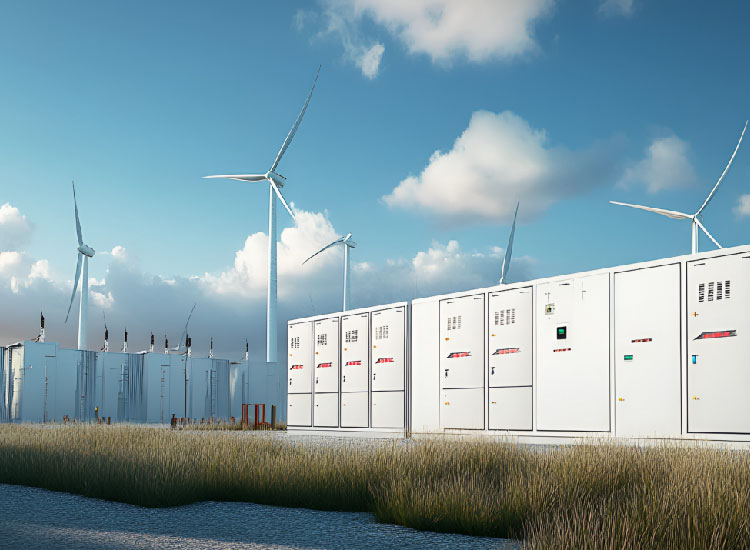In today’s rapid digital world, selecting the right commercial and industrial (C&I) storage strategy can make or break your operation. With countless options available, it’s crucial to understand how each choice impacts your workflow, efficiency, and overall project success.
This article will guide you through the key considerations for choosing a C&II storage strategy that aligns with your unique needs. You’ll learn about various storage solutions, their benefits, and how to assess which one fits your team’s goals best. By the end, you’ll be equipped to make informed decisions that enhance your C&I process and drive your projects forward.
Understanding C&I Energy Storage
C&I storage solution includes systems meant for commercial and industrial applications. These systems play a significant role in managing energy efficiently.
Key Components of C&I Energy Storage Systems
- Batteries: Lithium-ion batteries dominate this sector, yet lead-acid and flow batteries find their use in specific scenarios.
- Inverters: These devices convert direct current (DC) from batteries to alternating current (AC), facilitating energy distribution.
- Charge Controllers: Such components manage the battery charging process, ensuring safety and longevity.
- Management Software: Comprehensive software systems allow for monitoring and optimizing energy consumption.
Common Applications of C&I Energy Storage
- Peak Shaving: Systems reduce energy costs by discharging during peak demand times.
- Backup Power: They provide a reliable power source during outages, crucial for critical operations.
- Demand Response: Storage facilitates participation in demand response programs, allowing businesses to adjust their energy usage.
- Renewable Integration: These solutions support solar or wind energy systems by storing excess energy generated during peak production hours.
Behind-the-Meter (BTM) Strategy
BTM storage solutions provide a means for businesses to manage energy use more effectively. This strategy allows for energy storage systems to be placed on the customer’s side of the meter, which can lead to various operational benefits.
Definition and Characteristics
BTM refers to energy storage that’s installed behind the utility meter, providing direct benefits to users. Key characteristics include:
- Localized energy management
- Real-time energy usage tracking
- Connection to renewable energy sources
- Potential for lower energy costs
Advantages
The BTM strategy offers several advantages:
- Reduces demand charges during peak periods
- Allows for backup power during outages
- Supports integration with solar energy
- Increases overall system efficiency
Considerations
Several factors may influence the choice of a BTM strategy:
- Initial installation costs can be significant
- Local regulations might impact operations
- Performance varies based on the specific technology used
- Long-term savings may not be immediate
Choosing a BTM strategy aligns well with the objectives of C&I storage solutions, enabling better control over energy usage.
Front-of-the-Meter (FTM) Strategy
The Front-of-the-Meter (FTM) strategy focuses on integrating energy storage systems directly into the utility’s infrastructure. This approach differs from the Behind-the-Meter (BTM) method, allowing larger-scale energy management.
Definition and Characteristics
FTM storage systems, positioned before utility meters, serve various purposes. These systems typically support grid stability, enhance energy reliability, and allow for active participation in energy markets. They encompass several technologies, including batteries and pumped hydro storage. Each setup might vary in capacity, from large utility-scale systems to smaller installations serving specific needs.
Advantages
Adopting an FTM strategy provides several benefits:
- Grid support: Enhances reliability and resilience.
- Cost savings: Participating in energy markets can reduce operational costs.
- Scalability: Accommodates varying energy demands and integrates with renewable sources.
These advantages contribute to a more effective energy management approach.
Considerations
Selecting an FTM strategy involves an array of considerations:
- Initial investment: Costs can be significant, impacting budget allocations.
- Regulatory environment: Local laws and incentives may influence feasibility.
- Site selection: Geographic factors affect performance and efficiency.
Addressing these points can help you make informed decisions about implementing an FTM energy storage solution.
Comparing BTM vs FTM for C&I Applications
Choosing between Behind-the-Meter (BTM) and Front-of-the-Meter (FTM) strategies requires you to evaluate various factors that affect your C&I storage solution.
Technical and Operational Differences
BTM systems sit on the customer’s side of the meter. They allow real-time energy management, giving you control over usage. FTM systems, on the other hand, integrate into utility infrastructure, supporting larger energy loads and grid stability.
- BTM: Local energy use, real-time tracking, equipment flexibility.
- FTM: Grid integration, scalable support, larger deployments.
Economic Evaluation
Cost scenarios differ significantly between BTM and FTM. Initial investments for BTM may be lower since it often requires less infrastructure. FTM typically involves larger upfront costs but offers benefits through market participation.
| Aspect | BTM | FTM |
| Installation Cost | Moderate | High |
| Operational Efficiency | High | Medium |
| Grid Interaction | Limited | Extensive |
Economic outcomes depend on your specific operational needs and the energy market conditions.
Regulatory and Policy Impacts
Policies can vary by region and significantly affect your choice. BTM installations often face fewer regulations, allowing for easier deployment. FTM strategies might encounter stricter requirements, impacting site selection and operational kinks.
What local regulations impact your decision? Is financial support, like incentives or grants, available for either approach? Aligning your strategy with regulatory frameworks can influence both cost and viability.
Optimizing Your Strategy: Steps to Success
Optimizing your C&I storage strategy involves careful planning and evaluation. Here are important steps you can take.
Define Operational Objectives
Clarify what you want to achieve with your C&I storage solution. Identify goals like cost reduction, energy efficiency, or reliability. Having clear objectives helps shape your overall storage strategy.
Analyze Load and Consumption Data
Gather and examine load patterns and consumption data. Track your facility’s energy use over time. This analysis can reveal trends that influence your storage decisions. Make adjustments based on peak usage and patterns.
Evaluate Local Tariff Structures and Incentives
Review local tariffs and identify potential incentives for storage systems. Costs can vary significantly based on local energy rates. Understanding these structures may uncover opportunities for savings through demand response programs and rebates.
Select an Appropriate System Architecture
Choose a system architecture that aligns with your operational needs. Decide between BTM and FTM based on your objectives. Each option offers different integration levels and brings distinct benefits to your organization.
Choose the Right Technology and Components
Select components that suit your planned strategy. Consider factors such as battery type, inverter capacity, and energy management systems. Lithium-ion batteries often provide high efficiency and longer lifespans, making them a popular choice.
CHINT C&I storage solutions feature modular lithium-ion battery systems, high-performance power conversion systems (PCS), and an integrated EMS platform, allowing businesses to tailor configurations based on load profiles, peak demand needs, and renewable integration goals.
Partner with Experienced Integrators
Engage with experienced integrators who can support your implementation needs. Their knowledge can provide insights into best practices and optimize synchronization of systems. A strong partnership can enhance the efficiency of your deployment.
Conduct Financial Modeling and Risk Assessment
Perform financial modeling to estimate costs and savings. Assess any risks involved with the project. This analysis helps gauge whether the investment aligns with your operational and financial goals.
Plan for Scalability and Future Integration
Prepare for future needs by planning for scalability. Ensure that your selected system can accommodate increased demand or technological advancements. This foresight can prevent costly upgrades down the line.
By following these steps, you position your operation to successfully carry out an efficient CI storage strategy tailored to your specific circumstances. Adjust your approach as needed to stay responsive to evolving requirements.
Conclusion
Choosing the right C&I storage strategy is crucial for enhancing your operational efficiency and project success. By understanding the unique advantages of both Behind-the-Meter and Front-of-the-Meter approaches, you can tailor your energy management to fit your specific needs.
Careful planning and evaluation will help you navigate the complexities of each option. Whether you’re looking for localized energy management or extensive grid integration, your decision will significantly impact your overall performance.
As you move forward, take the time to assess your objectives and consider the long-term implications of your choice. With the right strategy in place, you’ll be well-equipped to optimize your C&I processes and effectively manage your energy usage.






